Curb walking, also known as walking on a curb or curb stepping, is a natural method that some women use to try to induce labor. It involves walking back and forth on a curb, with one foot on the curb and the other on the ground.
The idea behind this method is that the uneven surface of the curb can help to stimulate the uterus and encourage labor to start.
While there is no scientific evidence to support the effectiveness of curb walking in inducing labor, some women report that curb walking to induce labor has worked for them. It is important to note, however, that there is no one-size-fits-all approach to inducing labor, and what works for one woman may not work for another.
Curb walking to induce labor should also be done with caution and under the guidance of a healthcare provider, as there are potential risks and side effects to consider.

Key Takeaways
- Curb walking is a natural method that some women use to try to induce labor.
- There is no scientific evidence to support the effectiveness of curb walking in inducing labor, but some women report that it has worked for them.
- Curb walking should be done with caution and under the guidance of a healthcare provider.
1. Understanding Labor Induction
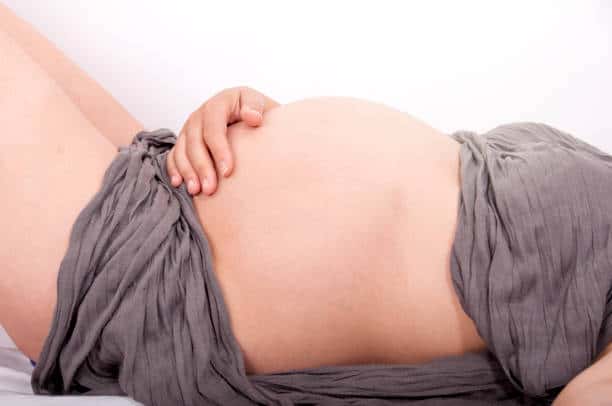
Labor induction is the process of artificially stimulating contractions in a pregnant woman to initiate labor. While there are medical reasons for labor induction, such as fetal distress or gestational diabetes, many women opt for labor induction to avoid going past their due date or to have more control over the timing of their delivery.
There are both medical and natural ways to induce labor. Medical induction involves the use of drugs, such as oxytocin or prostaglandins, to stimulate contractions.
Natural labor induction methods, on the other hand, involve using natural substances or techniques to encourage the onset of labor.
Cervical change plays a crucial role in labor induction. The cervix needs to be soft, thin, and dilated to allow the baby to pass through.
Medical induction methods often involve ripening the cervix before inducing labor. Natural methods can also help to ripen the cervix and prepare it for labor.
Some natural ways to induce labor include:
- Walking: Walking can help to stimulate contractions by encouraging the baby to move down into the pelvis. Curb walking, which involves walking up and down a curb, can be particularly effective.
- Acupuncture: Acupuncture is a traditional Chinese medicine technique that involves inserting needles into specific points on the body. It can help to stimulate contractions and ripen the cervix.
- Sex: Sex can help to induce labor by releasing prostaglandins, which can stimulate contractions and ripen the cervix.
- Nipple stimulation: Stimulating the nipples can release oxytocin, a hormone that can trigger contractions.
It is important to note that natural induction methods may not be effective for everyone and should only be attempted under the guidance of a healthcare provider. Medical induction may be necessary in some cases to ensure the safety of both the mother and the baby.
2. Curb Walking: An Overview
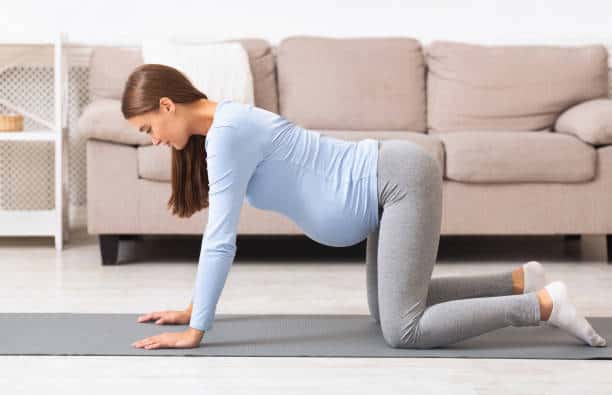
Curb walking is a simple and natural way to induce labor. It involves walking on a curb or a step with one foot on the curb and the other on the ground, alternating feet every few steps.
This exercise is believed to help the baby move down into the pelvis and put pressure on the cervix, which can trigger contractions.
Walking is a low-impact exercise that can help prepare the body for labor. It is also a great way to stay active during pregnancy and maintain overall health.
Curb walking is a variation of regular walking that can be done anywhere there is a curb or a step.
There is limited scientific evidence to support the effectiveness of curb walking for labor induction. However, many women have reported success with this method.
It is important to note that curb walking should only be done under the supervision of a healthcare provider and should not be attempted if there are any complications with the pregnancy.
Curb walking is a safe and natural way to encourage labor, but it is not a guaranteed method. It is important to discuss any concerns or questions with a healthcare provider before attempting any labor induction methods.
3. How Curb Walking Works
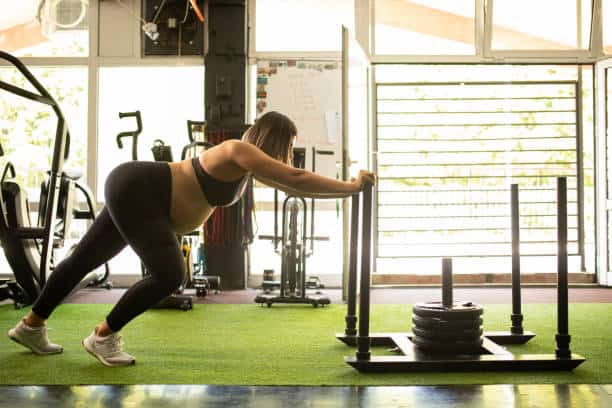
Curb walking is a natural and simple way to induce labor. It involves walking up and down a curb or step, which creates an uneven gait and increases the pressure on the pelvis.
This pressure can help the baby move down into the pelvis and put pressure on the cervix, which can help it to dilate.
The idea behind curb walking is that the gravitational force of walking downhill puts pressure on the baby’s head, encouraging it to move down into the pelvis. This can help to stimulate contractions and encourage labor to start.
In addition to the pressure on the pelvis, curb walking also uses the body’s own weight to help encourage labor. As the person walks down the curb, their body weight is shifted forward, which can help to push the baby down and put pressure on the cervix.
It is important to note that curb walking should only be done when the person is close to their due date and when their doctor has given them the go-ahead to try natural methods to induce labor. Curb walking should not be done if the person is experiencing any complications or if their doctor has advised against it.
Overall, curb walking is a safe and natural way to help induce labor. It can be done in the comfort of the person’s own home and can be a helpful addition to other natural methods of inducing labor.
4. The Role of Physical Activity in Inducing Labor

Physical activity has been suggested as a way to induce labor naturally. It is believed that certain types of physical activities can help stimulate the uterus and encourage the baby to move down towards the birth canal.
However, it is important to note that there is limited scientific evidence to support these claims.
Exercise and physical activity in general can help improve overall health and well-being during pregnancy. It can also help prepare the body for labor and delivery.
Walking, in particular, is a low-impact exercise that can be easily incorporated into a daily routine. It can help improve circulation, strengthen the pelvic muscles, and encourage the baby to move into the optimal position for birth.
Balance exercises, such as yoga or Pilates, can also be beneficial during pregnancy. They can help improve posture, increase flexibility, and strengthen the core muscles.
Additionally, balance exercises can help prepare the body for the physical demands of labor and delivery.
Stairs and lunges are other physical activities that have been suggested to help induce labor. Climbing stairs can help the baby move down into the pelvis, while lunges can help stretch and strengthen the pelvic muscles.
However, it is important to approach these exercises with caution and to consult with a healthcare provider before attempting them.
The Miles Circuit is a series of exercises that is designed to help encourage the baby to move down towards the birth canal. It includes a combination of walking, lunges, pelvic tilts, and squatting.
While there is limited scientific evidence to support the effectiveness of the Miles Circuit, some women have reported success with this method.
In conclusion, physical activity can be a beneficial way to prepare the body for labor and delivery. While there is limited scientific evidence to support the effectiveness of certain types of physical activities in inducing labor, they can still be incorporated into a daily routine to help improve overall health and well-being during pregnancy.
It is important to approach physical activity with caution and to consult with a healthcare provider before attempting any new exercises.
5. Medical Perspective on Curb Walking
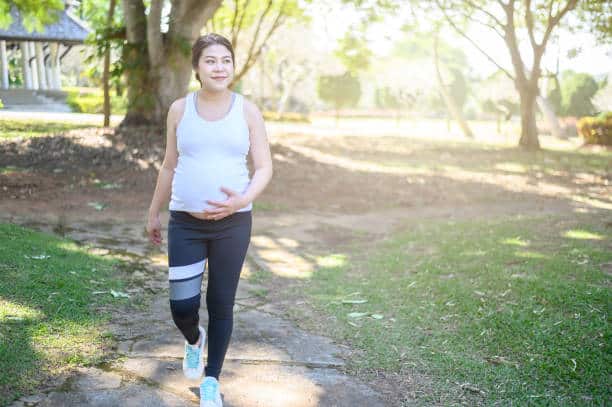
Curb walking is a natural and non-invasive method to induce labor. However, it is important to consider the medical perspective before attempting this method.
From the perspective of obstetricians, doctors, midwives, physicians, healthcare providers, and OB-GYNs, curb walking may be recommended as a safe and effective method to induce labor in some cases. However, it is important to note that there is limited scientific evidence to support the effectiveness of this method.
According to medical professionals, curb walking may help to stimulate contractions by putting pressure on the cervix and encouraging the baby to move down into the pelvis. This can be especially helpful for women who are already dilated and effaced but have not yet gone into labor.
It is important to note that curb walking should only be attempted under the guidance of a healthcare provider. Women with certain medical conditions or risk factors may not be good candidates for this method and may require other forms of induction, such as medication or artificial rupture of membranes.
In addition, curb walking may not be effective for all women. It is important to be patient and not to expect immediate results.
It is also important to listen to your body and stop if you experience any discomfort or pain.
Overall, curb walking can be a safe and effective method to induce labor for some women. However, it is important to consult with a healthcare provider before attempting this method and to be aware of the potential risks and limitations.
6. Other Natural Methods to Induce Labor
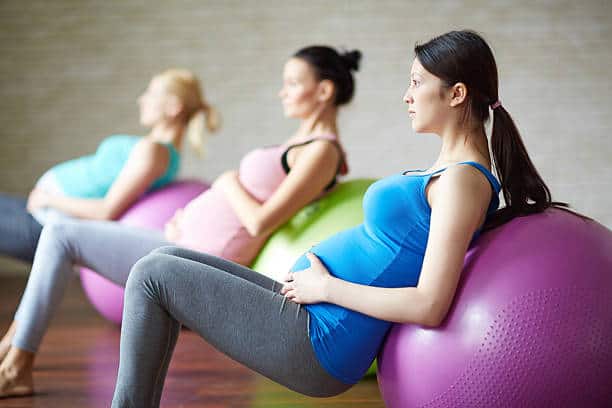
In addition to curb walking, there are several other natural methods that some women use to try and induce labor. While there is limited scientific evidence to support these methods, some women swear by them.
Here are a few of the most common methods:
- Sex: Some women believe that having sex can help to induce labor. This is because semen contains prostaglandins, which can help to soften and ripen the cervix.
- Additionally, orgasms can cause contractions in the uterus. However, there is limited scientific evidence to support this claim.
- Spicy food: Some women believe that eating spicy food can help to induce labor. This is because spicy food can cause the digestive system to become more active, which could stimulate the uterus.
- However, there is no scientific evidence to support this claim.
- Castor oil: Some women believe that taking castor oil can help to induce labor. This is because castor oil can cause the bowels to become more active, which could stimulate the uterus.
- However, taking castor oil can also cause diarrhea and dehydration, which can be dangerous for both the mother and the baby.
- Nipple stimulation: Some women believe that stimulating the nipples can help to induce labor. This is because nipple stimulation can cause the release of oxytocin, which can help to stimulate contractions.
- However, there is limited scientific evidence to support this claim.
- Evening primrose oil: Some women believe that taking evening primrose oil can help to induce labor. This is because evening primrose oil contains prostaglandins, which can help to soften and ripen the cervix.
- However, there is limited scientific evidence to support this claim.
- Breast pump: Some women believe that using a breast pump can help to induce labor. This is because nipple stimulation can cause the release of oxytocin, which can help to stimulate contractions.
Similar post: 5 Strange Signs Of Labor
- However, there is limited scientific evidence to support this claim.
- Red raspberry leaf tea: Some women believe that drinking red raspberry leaf tea can help to induce labor. This is because red raspberry leaf tea can help to tone the uterus and prepare it for labor.
- However, there is limited scientific evidence to support this claim.
- Acupuncture: Some women believe that acupuncture can help to induce labor. This is because acupuncture can help to stimulate the release of oxytocin, which can help to stimulate contractions.
- However, there is limited scientific evidence to support this claim.
- Kickstart labor naturally: Some women believe that there are certain activities that can help to kickstart labor naturally. These activities include walking, bouncing on an exercise ball, and doing squats.
- However, there is limited scientific evidence to support these claims.
- Okra water: Some women believe that drinking okra water can help to induce labor. This is because okra water is believed to contain high levels of vitamin C and other nutrients that can help to stimulate the uterus.
- However, there is no scientific evidence to support this claim.
7. Safety and Precautions

Curb walking is a natural method that can help induce labor, but it is essential to take safety precautions to avoid any potential risks. Here are some safety tips to keep in mind when practicing curb walking:
- Wear comfortable and flat shoes: It is crucial to wear comfortable shoes with good support when practicing curb walking. Avoid wearing high heels, as they can increase the risk of falling and cause discomfort.
- Use a balance beam or handrail: Using a balance beam or handrail can help maintain balance and prevent falls. Make sure to choose a sturdy and stable surface to walk on.
- Practice in a safe environment: Choose a safe and secure location to practice curb walking, such as a quiet street or a park. Avoid practicing on busy roads or uneven surfaces that can increase the risk of injury.
- Listen to your body: It is essential to listen to your body and avoid overexertion. If you experience any discomfort or pain, stop immediately and rest.
In summary, curb walking can be a safe and effective method to induce labor, but it is crucial to take safety precautions to avoid any potential risks. By following these safety tips, you can practice curb walking safely and comfortably.
8. Potential Side Effects
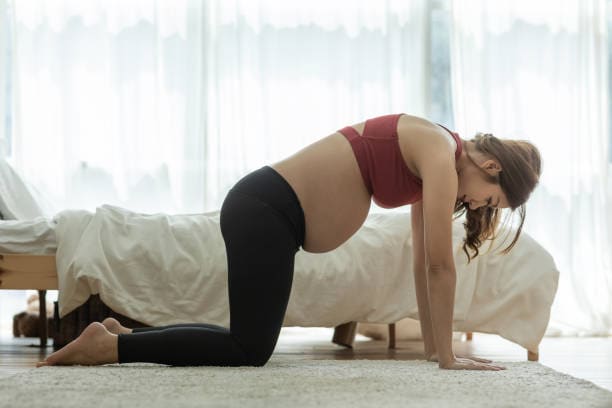
While curb walking is generally considered safe for pregnant women, there are some potential side effects to be aware of. It is always recommended to consult with a healthcare provider before attempting any form of labor induction.
Diarrhea
Curb walking may cause some women to experience diarrhea. This is because the movement can stimulate the bowels and increase intestinal activity.
While diarrhea is usually not harmful, it can lead to dehydration if not managed properly. Pregnant women should drink plenty of fluids and avoid foods that may exacerbate diarrhea.
Nausea
Some women may experience nausea while curb walking. This is likely due to the exertion involved in the activity. Pregnant women should take breaks as needed and avoid overexertion.
If nausea persists, it may be necessary to stop the activity and rest.
Vomiting
In rare cases, curb walking may cause vomiting. This is usually due to the combination of exertion and gastrointestinal stimulation.
Pregnant women who experience vomiting should stop the activity and rest. If vomiting persists or is accompanied by other symptoms, medical attention should be sought.
Overall, curb walking is a low-risk method of inducing labor. However, pregnant women should be aware of the potential side effects and take precautions to ensure their safety and well-being.
9. Understanding the Pregnancy Cycle

Pregnancy is a natural process that involves a series of changes in a woman’s body. It is a unique experience for every woman, and each pregnancy may differ from the other.
The pregnancy cycle typically lasts for 40 weeks, starting from the first day of the last menstrual period. During this time, the body undergoes several changes to prepare for the delivery of the baby.
The due date is the estimated date of delivery, which is calculated by adding 280 days (40 weeks) to the first day of the last menstrual period. However, it is important to note that only around 5% of women deliver on their due date.
Most women deliver within two weeks before or after the due date.
The final weeks of pregnancy are crucial as the baby’s organs are fully developed, and the baby gains weight rapidly.
At this stage, the baby is considered full-term, and it is safe for the baby to be born. The due date is an estimate, and it is essential to monitor the baby’s growth and development during the final weeks of pregnancy.
Walking is a common activity that pregnant women can do to help induce labor. It is a low-impact exercise that can help the baby move down into the pelvis and put pressure on the cervix, which can help trigger contractions.
However, it is important to note that there is no guarantee that walking will induce labor, and it may not work for everyone.
In summary, understanding the pregnancy cycle is essential for pregnant women and their partners. The due date is an estimate, and most women deliver within two weeks before or after the due date.
The final weeks of pregnancy are crucial, and it is important to monitor the baby’s growth and development. Walking is a common activity that can help induce labor, but it may not work for everyone.
10. The Role of Hormones in Labor Induction
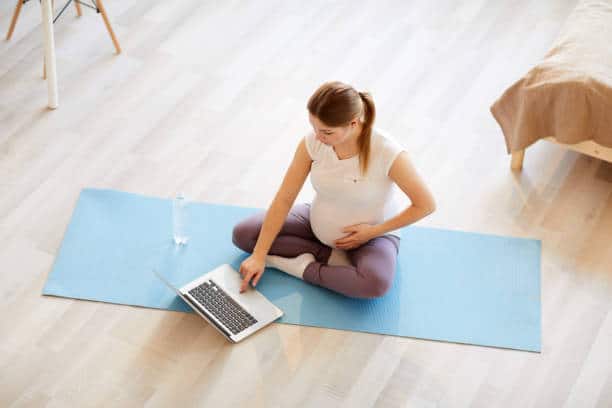
Hormones play a crucial role in inducing labor. Two of the most important hormones involved in labor induction are oxytocin and prostaglandins.
Oxytocin is a hormone that is produced naturally in the body. It is responsible for stimulating contractions in the uterus, which can help to induce labor.
Oxytocin is often used in medical settings to induce labor, either through an IV or through the use of a synthetic form of the hormone.
Prostaglandins are another type of hormone that can help to induce labor. They are naturally produced by the body and help to soften and thin the cervix, which can make it easier for the baby to pass through the birth canal.
Prostaglandins are often used in medical settings to induce labor, either through the use of a medication or through the insertion of a prostaglandin gel or tablet.
In addition to oxytocin and prostaglandins, there are several other hormones that can play a role in inducing labor. These include estrogen, which can help to soften the cervix and prepare it for labor, and progesterone, which can inhibit contractions and prevent labor from starting.
While hormones can be a powerful tool in inducing labor, it is important to note that they should only be used under the guidance of a healthcare provider. Inducing labor too early or too late can have serious consequences for both the mother and the baby, so it is important to carefully consider all of the factors involved before deciding to induce labor.
11. Cervix Changes and Labor

Cervix changes are a fundamental aspect of labor induction. The cervix is the lower part of the uterus that opens up during childbirth to allow the baby to pass through the birth canal.
Cervical dilation and effacement are the two primary changes that occur in the cervix during labor.
Dilation refers to the opening of the cervix, while effacement refers to the thinning of the cervix. Cervical dilation and effacement are essential for the baby to pass through the birth canal.
The cervix must dilate to 10 centimeters and efface to 100% for the baby to be delivered.
During labor induction, the goal is to promote cervical dilation and effacement to encourage labor to start. Curb walking is one method used to induce labor by promoting cervical changes.
Walking on curbs is said to help the baby move down into the pelvis, which can stimulate the cervix to dilate and efface.
It is important to note that the effectiveness of curb walking for inducing labor is still being researched. While some women may experience cervical changes and go into labor after curb walking, others may not see any changes at all.
It is also important to talk to a healthcare provider before attempting any labor induction methods.
12. Signs of Labor
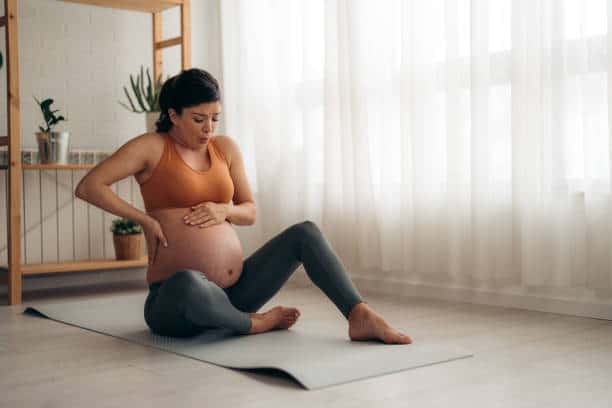
As the due date approaches, pregnant women may experience various signs of labor. These signs may indicate that the body is preparing for childbirth.
Here are some common signs of labor:
Contractions
Contractions are a common sign of labor. These are the tightening and relaxing of the uterine muscles.
Contractions can be described as menstrual cramps or a tightening sensation in the lower abdomen. They may start off mild and gradually become stronger and more frequent.
Timing the contractions can help determine if labor has begun. If contractions occur at regular intervals and become stronger and closer together, it may be time to head to the hospital.
Mucus Plug
The mucus plug is a thick, jelly-like substance that blocks the cervix during pregnancy. It helps protect the baby from infection.
As the cervix begins to soften and dilate, the mucus plug may be discharged. This is a sign that labor may begin soon.
The mucus plug can be clear, pink, or tinged with blood.
Mild Contractions
Mild contractions, also known as Braxton Hicks contractions, are common during pregnancy. These contractions are usually painless and irregular.
They may feel like a tightening or hardening of the uterus. Mild contractions are not a sign of labor but can help prepare the body for childbirth.
It is important to note that not all women experience the same signs of labor. Some women may not experience any signs until labor has already begun.
If there are any concerns or questions about signs of labor, it is best to consult a healthcare provider.
13. Role of Nutrition in Labor Induction
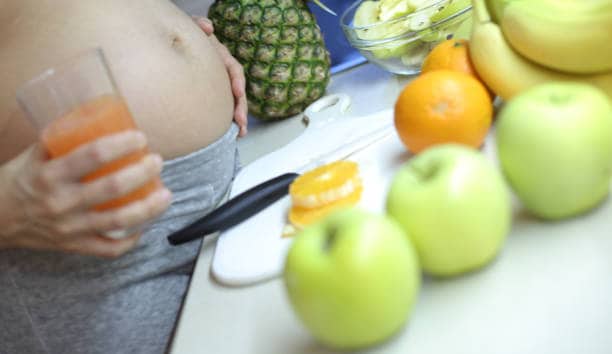
Nutrition plays a vital role in the process of labor induction. Eating a well-balanced diet that is rich in nutrients can help prepare the body for labor and delivery.
In addition to a healthy diet, there are certain foods that have been associated with labor induction.
One such food is dates. Dates are rich in fiber, potassium, and other nutrients that can help promote cervical ripening and stimulate contractions.
Studies have shown that consuming dates in the weeks leading up to labor can help reduce the need for medical interventions during delivery.
Another food that is often associated with labor induction is spicy foods. While there is no scientific evidence to support this claim, some women believe that consuming spicy foods can help stimulate contractions and induce labor.
However, it is important to note that consuming large amounts of spicy foods can lead to heartburn and indigestion, which can be uncomfortable during labor.
In addition to specific foods, it is important to maintain a well-balanced diet that includes plenty of fruits, vegetables, lean proteins, and whole grains. Eating a variety of nutrient-rich foods can help ensure that the body has the energy and resources it needs to support labor and delivery.
Overall, while there are certain foods that may help promote labor induction, it is important to approach nutrition with a balanced and informed perspective. A healthy diet that is rich in nutrients can help prepare the body for labor and delivery, but it is not a guarantee of a smooth and easy delivery.
14. Medical Interventions and Alternatives
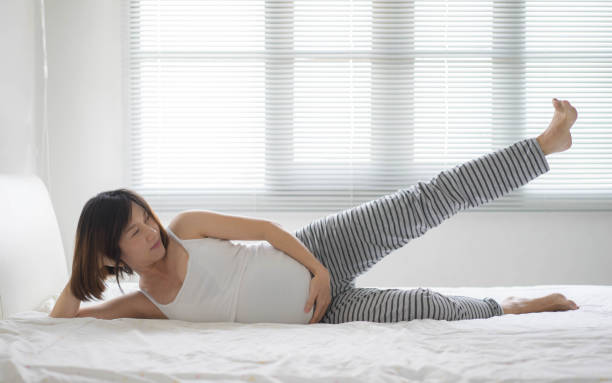
When it comes to inducing labor, medical interventions such as Pitocin and membrane stripping are commonly used. However, there are also alternative methods that can be considered.
One alternative method is acupuncture, which involves the insertion of thin needles into specific points on the body. This method has been shown to be effective in inducing labor in some women.
Another alternative is the use of herbal remedies, such as evening primrose oil and red raspberry leaf tea. However, it is important to note that the safety and effectiveness of these remedies have not been fully established.
It is also important to consider the potential risks and benefits of medical interventions. For example, a c-section may be necessary in certain situations, such as if the baby is in distress or if the mother has a medical condition that makes vaginal delivery unsafe.
However, c-sections also come with risks such as infection and longer recovery time.
Ultimately, the decision to use medical interventions or alternatives should be made in consultation with a healthcare provider. They can provide guidance on the most appropriate course of action based on the individual’s specific situation.
It is important to prioritize the health and safety of both the mother and baby during labor and delivery.
15. Role of Support During Labor

Support during labor is crucial for the well-being of the mother and the baby. The support can come from various sources such as a doula, doctor, or midwife.
Each of these entities has a unique role to play during labor.
A doula is a trained professional who provides emotional, physical, and informational support to the mother during labor. They offer comfort measures such as massage, breathing techniques, and positioning to help the mother cope with the pain.
Doulas also provide continuous support, which has been shown to reduce the need for pain medication and cesarean sections. They can also help the mother communicate her preferences and needs to the medical staff.
Doctors and midwives are responsible for the medical care of the mother and the baby during labor. They monitor the mother’s vital signs and the baby’s heart rate to ensure that both are healthy.
They also make decisions regarding pain management and interventions such as induction or cesarean section if necessary. Doctors and midwives can also provide emotional support to the mother and her partner by answering their questions and addressing their concerns.
The support of family members and partners is also essential during labor. They can provide emotional support, encouragement, and comfort measures such as holding the mother’s hand or providing a back rub.
Family members and partners can also advocate for the mother’s needs and preferences.
In conclusion, support during labor is crucial for the well-being of the mother and the baby. Doulas, doctors, midwives, and family members all have a role to play in providing support during labor.
Each entity brings a unique set of skills and expertise to the table, which can help ensure a positive birth experience for the mother and the baby.
16. What to Expect During Labor
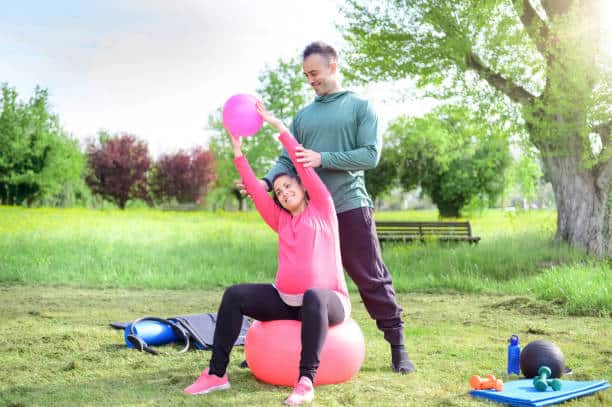
Labor is the process of giving birth to a baby. It begins when the uterus starts contracting and ends when the baby is born.
The length of labor varies from woman to woman and can last for several hours or even days.
During labor, the baby moves through the birth canal and out of the mother’s body. The birth canal is made up of the cervix, vagina, and vulva.
The cervix dilates or opens up to allow the baby to pass through.
As labor progresses, the contractions become stronger and closer together. The mother may experience pain, pressure, and discomfort during this time.
She may also feel the urge to push when the baby’s head is visible.
Once the baby is born, the umbilical cord is cut and the baby is placed on the mother’s chest for skin-to-skin contact. The baby will be checked by a healthcare provider to ensure that he or she is healthy.
In the hours and days following birth, the mother may experience postpartum bleeding, cramping, and soreness. She will also need to care for her newborn baby by feeding, changing, and comforting him or her.
Overall, labor and childbirth can be a challenging and rewarding experience for mothers and families. It is important to have a plan in place and to communicate with healthcare providers about preferences and concerns.
17. Post-Labor Care

After delivery, the mother and baby require some post-labor care to ensure their health and well-being. The following are some of the things that the mother should keep in mind during the post-labor period.
Bed Rest
After delivery, the mother may require some rest to allow her body to recover from the stress of labor. Bed rest is an essential part of post-labor care, and the mother should take adequate rest to ensure a speedy recovery.
The duration of bed rest may vary depending on the mother’s health condition and the type of delivery.
Activity Restriction
The mother should avoid any strenuous activity during the post-labor period. Activities such as lifting heavy objects, bending, and stretching should be avoided to prevent any injury or strain.
The mother should also avoid any activity that may cause discomfort or pain.
Breastfeeding
Breastfeeding is an essential part of post-labor care. The mother should start breastfeeding as soon as possible after delivery to ensure the baby gets the required nutrients and antibodies.
The mother should also ensure that she maintains a healthy diet to provide the baby with adequate nutrition.
Pain Management
Pain management is an essential part of post-labor care. The mother may experience pain and discomfort after delivery, and it is essential to manage the pain to ensure her comfort.
The doctor may prescribe pain medication to manage the pain.
Overall, post-labor care is essential for the mother and baby’s health and well-being. The mother should follow the doctor’s instructions and take adequate rest to ensure a speedy recovery.
18. Scientific Evidence on Curb Walking and Labor Induction
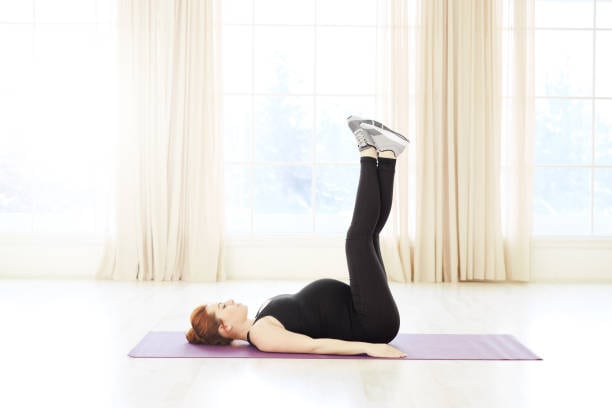
Curb walking is a natural induction method that has been gaining popularity among pregnant women who want to induce labor. The idea behind curb walking is that the up-and-down motion of walking on a curb can help the baby move down into the pelvis, which can stimulate contractions and eventually lead to labor.
While there is no scientific evidence to support the claim that curb walking can induce labor, some studies have suggested that it may be helpful in preparing the body for labor. For example, a study published in the Journal of Obstetrics and Gynaecology Research found that pregnant women who walked on an inclined treadmill for 30 minutes a day had a shorter first stage of labor than women who did not exercise.
Another study published in the Journal of Midwifery and Women’s Health found that women who walked for 30 minutes a day during the last weeks of pregnancy had a shorter first stage of labor and were less likely to need pain medication during labor.
However, it is important to note that these studies did not specifically look at the effects of curb walking on labor induction. Furthermore, the studies had small sample sizes and did not take into account other factors that could affect labor, such as the mother’s age, weight, and medical history.
Overall, while there is some anecdotal evidence to suggest that curb walking may be helpful in inducing labor, there is currently no scientific evidence to support this claim. Pregnant women who are considering curb walking as a natural induction method should talk to their healthcare provider first and be aware that there are no guarantees that it will work.
19. Frequently Asked Questions
What is curb walking?
Curb walking is a gentle exercise that involves walking up and down a curb or step. This exercise is believed to help induce labor by increasing pressure on the cervix and encouraging the baby to move down into the birth canal.
How effective is walking to induce labor?
Walking is considered a natural way to induce labor and can be effective for some women. However, the effectiveness of walking to induce labor varies from person to person, and there is no guarantee that it will work.
How long should I curb walk for to induce labor?
The duration of curb walking varies from person to person, but it is recommended to start with short intervals of 5-10 minutes and gradually increase the duration up to 30 minutes. It is important to listen to your body and not overdo it.
How can I dilate faster by walking?
Walking can help dilate the cervix by increasing blood flow to the pelvic area and stimulating contractions. However, it is important to note that walking alone may not be enough to induce labor or speed up dilation.
Can walking too much cause early labor?
Walking is generally considered safe during pregnancy and is unlikely to cause early labor. However, if you have any concerns or medical conditions, it is important to consult with your healthcare provider before starting any new exercise routine.
Does walking help baby drop?
Walking can help encourage the baby to move down into the pelvis, also known as “dropping.” However, it is important to note that the baby’s position is influenced by many factors and walking alone may not be enough to make the baby drop.

Nazeli Gevorgyan studied at Yerevan State Medical University and is an Obstetrics/Gynecology resident
